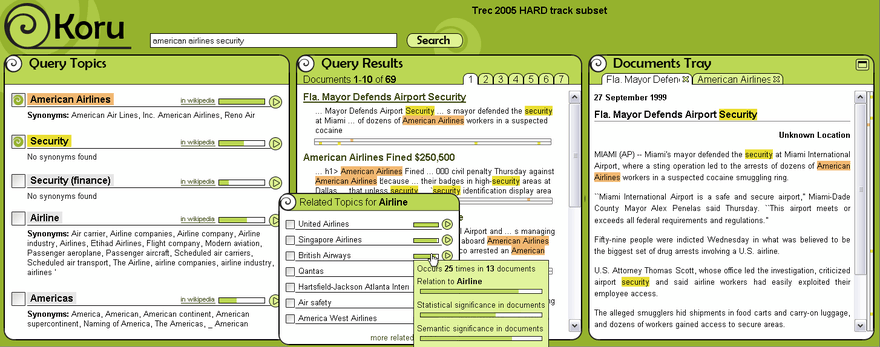Koru search engine
Koru is part of an ongoing research project to investigate how Wikipedia can be utilized to provide intelligent, intuitive information retrieval. Koru is the Māori word for the newborn, unfurling fern frond- it symbolizes growth and evolution[1]
The Koru search engine is part of David Milne's PhD and is still under development.
Operation
Koru
- expands queries automatically
- helps guide the user evolve their queries interactively
Interface

The interface is illustrated in the screenshot above. Implementation is based on the AJAX framework, which provides a reactive interface in a web page.
Configurations
There are three possible configurations, which relate to three stages of expected user behavior:
- Building an appropriate query. This involves adding and removing phrases until the query and corresponding list of query results satisfies the user’s information need. At this stage two panels are visible: query topics and query results (the leftmost two panels in the screenshot).
- Browsing the document list. Once a suitable list of documents is returned, the user must determine the most relevant ones and judge whether they warrant further study. At this point the panels in Figure 1 slide across so that only the rightmost two (query results and document tray) are visible.
- In-depth reading of a chosen document. Having located a worthy document, the user then devotes time to actually reading the relevant sections. Here only the documents tray is needed. Anything else would be a distraction.
References
Further reading
David Milne, Ian H. Witten, David M. Nichols, A Knowledge-Based Search Engine Powered by Wikipedia, http://citeseerx.ist.psu.edu/viewdoc/download?doi=10.1.1.148.2362&rep=rep1&type=pdf